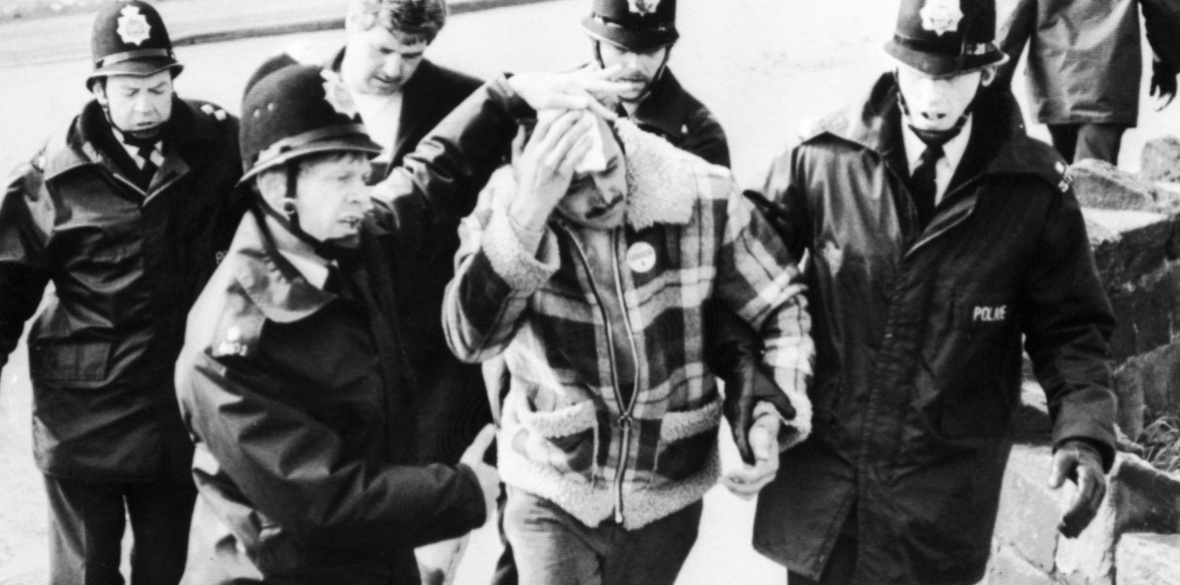This is the last article you can read this month
You can read more article this month
You can read more articles this month
Sorry your limit is up for this month
Reset on:
Please help support the Morning Star by subscribing here
“SOME things just stick in your mind,” as Vashti Bunyan sang all those years ago.
As I packed my bags yesterday for Durham, where I’ll be spending the weekend at the Big Meeting, I couldn’t help but think of a speech I heard there four years ago, when I was attending the Miners’ Gala for the first time.
Tosh McDonald, then president of train drivers’ union Aslef, spoke of the historic connection between the railways and the coal industry.
“I started work on the railway in 1979 as a freight guard in Doncaster,” he recalled. “Every day at work we were moving coal, from a pit to a power station, bringing the empty carriages back to the pits to be loaded again, and we owned it — we owned it all.
“We owned the pits, and the members of the National Union of Mineworkers went down to the bowels of the earth, and they brought the coal up, and they loaded it on to the trains that we owned, in British Rail.
“And members of Aslef, and what’s now become the RMT, transported it, to the power stations that we owned. And then they generated it into electricity and they distributed it because we owned the power to distribute it too.”
McDonald went on to say he was “proud of the support all the rail unions gave to the mineworkers, and we’re all proud that not a shovel-full of coal moved by rail” during the 1984-85 strike.
The late, great Davy Hopper, then still general secretary of the Durham Miners Association, said: “If we’d had the support of the rest of the movement like Aslef supported us, we would have got a different result in that strike.”
It’s no surprise that they stood together. Throughout the 20th century, both the railways and the pits were known for their strong collective identities.
This was in no small part down to the strength of the trade unionism in these industries, and the respective unions’ long-held belief that an injury to one was an injury to all.
When the coal industry was decimated under Thatcher and Major, the spirit lived on in the communities savaged in the process — but the industrial leverage of this steadfast solidarity was no more.
In the railways, however, it went from strength to greater strength — particularly under Bob Crow’s leadership of the RMT, and the continuation of his legacy under his successor Mick Cash.
The union ballots for strike action more frequently than any other — often using the threat of disruption, and operators’ knowledge workers will follow through, to secure some of the best deals on pay, pensions and job security in modern-day Britain without even downing tools.
The collective identity of both industries also stemmed from their proud histories of honest, hard, manual work.
Generations of the same families would work at the same collieries and depots over centuries, passing down not only skills but pride.
Here in Glasgow, a major part of that is currently under threat. The St Rollox railway works in Springburn, built for the Caledonian Railway in 1856 and thus popularly known as “the Caley,” is set to be closed.
Its owner, Gemini Rail Group (which in turn is owned by the German holdings firm Mutares), says potential work has dried up with the introduction of new trains — which in an increasingly common trend are maintained directly by their manufacturers.
The Scottish government has faced calls to nationalise the Caley, save 200 jobs and 160 years of railway history, and revive it to its much greater potential.
But Nicola Sturgeon has declined to do so. When she was pressed over the lack of intervention by Scottish Labour at First Minister’s Questions last month, she replied: “Richard Leonard might conclude that there might be a good reason why that is the case, given the government’s overall responsibilities to the taxpayer.”
The SNP government’s unwillingness to intervene comes from a reluctance to contravene EU state aid rules — which prevent governments from offering assistance if it will make a company or industry more competitive than rivals in other European countries.
This week, however, saw the emergence of a ray of hope — and symbolically, you could say it’s a debt of honour being repaid by Old King Coal.
Under a plan promoted by Labour MP Paul Sweeney, a steam locomotive currently housed at the Summerlee Museum of Scottish Industrial Life in Coatbridge could be restored at the Caley.
This Garratt loco was built there in the 1950s for South African Railways, and returned to Scotland in 1988. It’s in a sorry state, but crucially it’s owned by North Lanarkshire Council, which has given the thumbs up for the refurb project.
The fact its future usage would be for heritage purposes would exempt the project from state aid restrictions.
With a buyer apparently interested, but not ready to move quick enough to avoid redundancies, this plan could bridge the gap and keep the current workforce employed.
While saving the jobs must be the first priority, unions recognise that the long-term future will only be secure with public ownership.
This would be strengthened with the kind of infrastructure integration McDonald recalled in his speech at Durham in 2015, in which the public good takes priority over the profit motive.
The few publicly owned enterprises in present-day Britain, and the many more in much of Europe, are forced to operate as “competitive” private companies in all but name.
In the meantime, Sturgeon has a fresh chance to keep skilled workers off the dole queues, and save a vital part of Scotland’s industrial base. Will she seize the day?

 Conrad Landin
Conrad Landin









